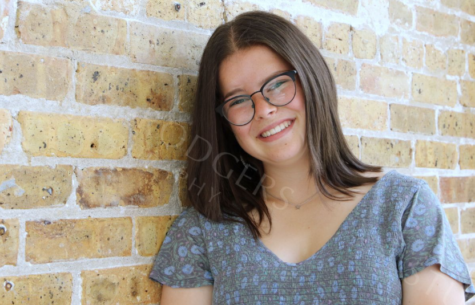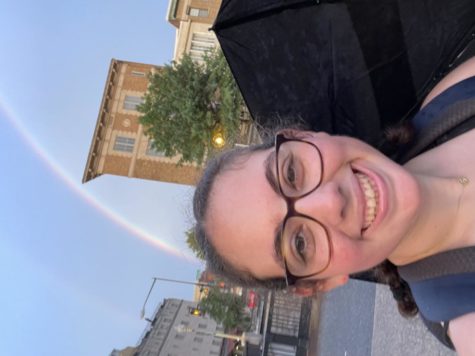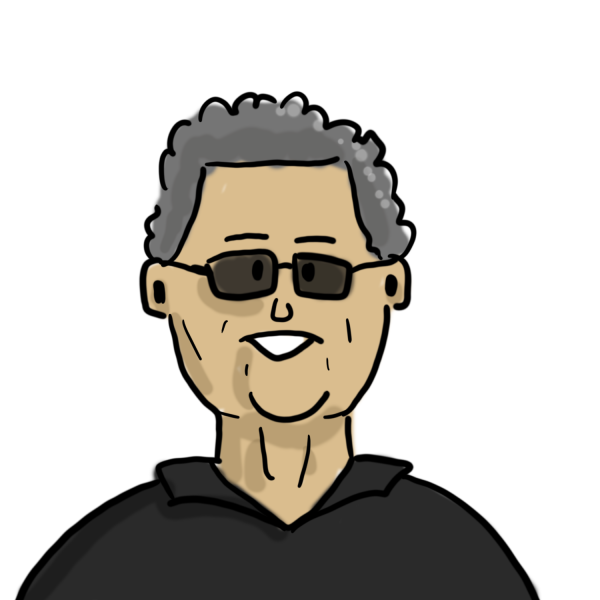Color Guard captains recount culture of abuse, intensity under head coach
*We have changed the names of some students to protect their privacy.
Lorenzo Medrano, a Color Guard coach at ETHS, was placed on leave on Sept. 16 following his arrest on child seduction charges in Indiana, where he was also employed as a Color Guard coach at LaPorte High School.
These criminal charges, filed on Sept. 13, 2021, focused on Medrano’s time in LaPorte County between Oct. 2019 and March 2020. In March 2020, Medrano was fired from LaPorte High School. The charges were a result of a complaint filed by a LaPorte student in Sept. 2021, as she wanted to wait to report the incident until she was 18 years old. On Sept. 15, 2021, Medrano was arrested by police in LaPorte County and was placed on leave by ETHS’ HR department on Sept. 16. Medrano will remain on leave pending the result of his court appearance. Medrano posted bail and will return to LaPorte County Court on Dec. 8 for a hearing regarding these charges.
Medrano, who has been working as a Color Guard coach at ETHS since 2016, was the subject of incident reports and complaints filed by ETHS students who had direct contact with him. A year after he had been dismissed from the same role at LaPorte High School, Medrano was the subject of an internal investigation in March 2021 at ETHS. Ultimately, Medrano was cleared by two other ETHS Color Guard coaches in April 2021 and continued as the head coach into this current school year, according to Color Guard student captains.
“Our assistant coaches covered for him on official records, [and] they dismissed our accusations about him and his behavior,” a junior and Color Guard captain, Lucy*, says.
All three captains, who have been involved in both Winter Guard and Color Guard since their respective freshman years of high school, report uncomfortable interactions and unwanted attention from Medrano throughout the season. They also expressed that Medrano frequently crossed both physical and verbal boundaries, as well as displayed an inherent disrespect for the members’ time and wellbeing.
“I was always sort of uncomfortable when he would touch me,” another junior and Color Guard captain, Sarah*, says of her feelings during interactions she had with Medrano throughout practices. “I always felt that he didn’t respect my time either. The end of practice was always really not clear, and we would get out at different times.”
Additionally, the Color Guard captains recall feeling a range of emotions on Sept. 16 after receiving an email detailing the news of Medrano’s leave of absence. The initial email, sent on behalf of the Fine Arts Department to affected students, did not provide details about Medrano’s arrest or future court appearance.
“[When we got the email] I was shocked [but] I was not surprised,” senior and Color Guard captain Charlotte Miller recalls.
Shortly thereafter, the affected students received two additional emails, one on Sept. 23 and the other on Oct. 1. Both emails contained a list of institutional supports; one was sent by Principal Marcus Campbell and the other was sent by the Fine Arts Department. However, Color Guard members were only made aware of Medrano’s arrest after an article from a news source in Indiana began to circulate amongst the team.
“They just sent out an email [with] a list of social workers without really explaining why, which put us in a hard situation because not everyone on the team knew,” Sarah says.
Members of Color Guard were not approached by any mental health professionals or staff members as a team to aid them in processing the traumatic events that had taken place. Rather, when Color Guard captains were approached by individuals on the team who knew less about the situation, the captains were forced to navigate those conversations without the support of a mental health professional or staff member. Color Guard members received little support outside of their community as well, given that many teachers, students and staff members were unaware of the situation.
“[The administration] doesn’t have a way to relay this information to students, and there needs to be some sort of system put in place, because this was a mess, and they put all of that on the captains,” Miller says.
The captains also feel that the small size of Color Guard only further enables the administration to remain uneducated on the group’s contributions to the school and ignore their needs in a time of vulnerability.
“People don’t really know what Color Guard is. I understand that it’s not a hugely recognized thing around Evanston, but that doesn’t excuse our administration [for] not knowing what it is,” Lucy says.
The Color Guard captains overwhelmingly feel that this issue was handled poorly by the ETHS administration; furthermore, they recall feeling a general sense of disengagement and lack of concern for the victims of Medrano’s abuse.
“I was informed [about his arrest] by another student, and anything the school sent wasn’t really informative. I just wish they had asked us if we needed support or pointed us in some direction. On my own, I did things like go to the social worker,” Sarah explains.
One captain recalls being pulled out of class to relay information about the situation to a social worker and dean, but was not given any notice about this conversation and felt they had no opportunity to opt-out. They did not feel this intervention by the administration was adequate or done with respect for their wellbeing, but rather was done to gain information about what had happened.
“One day when I was in class, a social worker came up to me and said, ‘We’re going downstairs to talk to the dean.’ She didn’t really tell me what we were talking about. She sort of just alluded to it. I was caught completely off guard. I didn’t have any time to organize my thoughts or concerns,” Lucy says.
Overall, the Color Guard captains were disappointed with the inaction of the ETHS administration and wished that there had been more communication and intervention. However, the captains want the ETHS student body to know that they are healing.
“I’d want [the] student body to know that I don’t want this to happen to anybody again, and I’m willing to do my best to help put systems in place to stop this from happening again,” Miller says. “And I also want them to know that we’ll be okay.”
Your donation will support the student journalists of the Evanstonian. We are planning a big trip to the Journalism Educators Association conference in Philadelphia in November 2023, and any support will go towards making that trip a reality. Contributions will appear as a charge from SNOSite. Donations are NOT tax-deductible.












